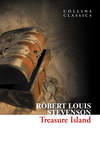Kitabı oku: «Thomas Andrews, Shipbuilder», sayfa 2
II
When he was sixteen, on the 1st May, 1889, Tom left school, and as a premium apprentice entered the shipyard of Messrs. Harland & Wolff. In one important respect the date of his entry may be accounted fortunate, for about that time, chiefly through the enterprise of the White Star Company in the matter of constructing a fleet of giant ships for the Atlantic service, great developments were imminent, if not already begun, in the shipping world. To a boy of sixteen, however, the change from the comforts of home and the comparative freedom of school-life to the stern discipline of the yards must have been exacting. It was work now, and plenty of it, summer and winter, day in day out, the hardest he could do at the hardest could be given him. He was to be tested to the full. With characteristic wisdom, Mr. Pirrie had decided that no favour whatever was to be shown the boy on the score of relationship. By his own efforts and abilities he must make his way, profiting by no more than the inspiration of his uncle’s example: and if he failed, well, that too was a way many another had gone before him.
But Tom was not of the breed that fails. He took to his work instantly and with enthusiasm. Distance from home necessitated his living through the workaday week in Belfast. Every morning he rose at ten minutes to five and was at work in the Yard punctually by six o’clock. His first three months were spent in the Joiner’s shop, the next month with the Cabinet makers, the two following months working in ships. There followed two months in the Main store; then five with the Shipwrights, two in the Moulding loft, two with the Painters, eight with the iron Shipwrights, six with the Fitters, three with the Pattern-makers, eight with the Smiths. A long spell of eighteen months in the Drawing office completed his term of five years as an apprentice.
Throughout that long ordeal Tom inspired everyone who saw him, workmen, foremen, managers, and those in higher authority, as much by the force of his personal character as by his qualities of industry. Without doubt here was one destined to success. He was thorough to the smallest detail. He mastered everything with the ease of one in love with his task. We have a picture of him drawn by a comrade, in his moleskin trousers and linen jacket, and instinctively regarded by his fellow-apprentices as their leader, friend and adviser in all matters of shipyard lore and tradition. “He was some steps ahead of me in his progress through the Yard,” the account goes on, “so I saw him only at the breakfast and luncheon hours, but I can remember how encouraging his cheery optimism and unfailing friendship were to one who found the path at times far from easy and the demands on one’s patience almost more than could be endured.” Many a workman, too, with whom he wrought at that time will tell you to-day, and with a regret at his untimely loss as pathetic as it is sincere, how faithful he was, how upstanding, generous. He would work at full pressure in order to gain time to assist an old workman “in pulling up his job.” He would share his lunch with a mate, toil half the night in relief of a fellow-apprentice who had been overcome by sickness, or would plunge gallantly into a flooded hold to stop a leakage. “It seemed his delight,” writes a foreman, “to make those around him happy. His was ever the friendly greeting and the warm handshake and kind disposition.” Such testimony is worth pages of outside eulogy, and testimony of its kind, from all sorts and conditions, exists in abundance.
The long day’s work over at the Island, many a young man would have preferred, and naturally perhaps, to spend his evenings pleasurably: not so Tom Andrews. Knowing the necessity, if real success were to be attained, of perfecting himself on the technical as much as on the practical side of his profession, and perhaps having a desire also to make good what he considered wasted opportunities at school, he pursued, during the five years of his apprenticeship, and afterwards too, a rigid course of night studies: in this way gaining an excellent knowledge of Machine and Freehand drawing, of Applied mechanics, and the theory of Naval architecture. So assiduously did he study that seldom was he in bed before eleven o’clock; he read no novels, wasted no time over newspapers; and hardly could be persuaded by his friends to give them his company for an occasional evening. His weekly game of cricket or hockey, with a day’s hunting now and then or an afternoon’s yachting on the Lough, gave him all the relaxation he could permit himself; and by 1894, when his term of apprenticeship ended, the thrill of hitting a ball over the boundary (and Tom was a mighty hitter who felt the thrill often) was experienced with less and still less frequency, whilst sometimes now, and more frequently as time went on, the joy of spending Sunday with his dear folk at Comber had to be foregone. Even when the Presidency of the Northern Cricket Union was pressed upon him, such were the stern claims of duty that the pleasure of accepting it had ruthlessly to be sacrificed.
What grit, what zest and sense of duty, the boy – for he was no more – must have had, so to labour and yet to thrive gloriously! Perfect health, his sound physique, his sunny nature, and strict adherence to the principles of temperance encouraged by his mother, helped him to attain fine manhood. During the period of his apprenticeship he was up to time on every morning of the five years except one – and of his doings on that fateful morning a story is told which, better perhaps than any other, throws light upon his character.
It was a good custom of the firm to award a gold watch to every pupil who ended his term without being late once. That morning Tom’s clock had failed to ring its alarm at the usual time, so despite every endeavour the boy could not reach the gates before ten minutes past six. He might, by losing the whole day and making some excuse, have escaped penalty: instead, he waited outside the gates until eight o’clock and went in to work at the breakfast hour.
One other story relating to this period is told by his mother. It too reveals distinctive points of character.
On an occasion Tom, with several fellow-pupils, went on a walking tour during the Easter holidays over the Ards peninsula. Crossing Strangford Lough at Portaferry, they visited St. John’s Point, the most easterly part of Ireland; then, finding the tide favourable, crossed the sands from Ballykinler to Dundrum – Tom carrying the youngest of the party on his back through a deep intervening stretch of water – and thence, by way of Newcastle, proceeded across the mountains to Rostrevor.
In their hotel at Rostrevor the boys, during an excess of high spirits, broke the rail of a bedstead; whereupon Tom, assuming responsibility, told the landlady that he would bear the expense of repairing the break. She answered that in her hotel they did not keep patched beds, consequently would be troubling him for the cost of a new one.
“If so, the old one belongs to me,” said Tom.
“Provided you’ll be taking it away,” countered the dame.
The boy argued no further, but finding presently, through a friendly chambermaid, an old charwoman who said her sick husband would rejoice in the luxury of the bedstead, he offered to mend it and give it to her.
“Ah, but wouldn’t it be more than my place is worth, child dear,” she answered, “for the like of me to be taking it from the hotel.”
“Never mind that,” said Tom. “Give me your address, borrow a screw driver, and I’ll see to it.”
So he and his companions, having roughly repaired the rail, took the bedstead to pieces, and, applauded by the visitors, carried it to the street. A good-natured tram conductor allowed them to load their burden on an end of his car. Soon they reached the woman’s home, bore in the bedstead, set it up in the humble room, raised the old man and his straw mattress upon it from the floor, made him comfortable, and dowered with all the blessings the old couple could invoke upon them, went away happy.
III
So much impressed was the firm with Tom’s industry and capacity that, soon after the time of his entering the Drawing Office in November, 1892, he was entrusted with the discharge of responsible duties. It is on record that in February, 1893, he was given the supervision of construction work on the Mystic; that in November of the same year he represented the firm, to its entire satisfaction and his own credit, on the trials of the White Star Liner Gothic; whilst, immediately following the end of his apprenticeship in May, 1894, he helped the Shipyard Manager to examine the Coptic, went to Liverpool and reported on the damage done to the Lycia, and in November discussed with the General Manager and Shipyard Manager the Notes in connection with the renovation of the Germanic– that famous Liner, still capable after twenty-five years on the Atlantic Service of making record passages, but now crippled through being overladen with ice at New York.
In 1894 he was twenty-one years old: a man and well launched on his great career.
It is not necessary, and scarcely possible, to follow Andrews with any closeness as rapidly, step by step, he climbed the ladder already scaled, with such amazing success, by Mr. Pirrie. The record of his career is written in the wonderful story of the Queen’s Island Yard through all its developments onward from 1894, and in the story of the many famous ships repaired and built during the period.
The remarkable engineering feat of lengthening the Scot and the Augusta Victoria, by dividing the vessels and inserting a section amidships; the reconstruction of the China after its disaster at Perim and of the Paris following its wreck on the Manacles: in these operations, covering roughly the years 1896-1900, Andrews, first as an outside Manager and subsequently as Head of the Repair department, took a distinguished part. He was growing, widening knowledge, maturing capacity, and both by the Staff, and by those in touch with the Yard, he became recognised as what the watching crowd terms, not unhappily, a coming man.
Having made his mark in the Repair Department, Andrews was next to prove himself on construction work. Prior to the launch of the Oceanic in 1899, and whilst engaged in the reconstruction operations already mentioned, he had also rendered good service at the building of ships for many of the great steamship lines; but it was perhaps with the building of the Celtic (1899-1901), when he became Manager of Construction Work, that the path of his career took him swiftly up into prominence. The duty of supervising all the structural details of the vessel brought him into close practical touch with the Drawing office, the Moulding loft, the Platers’ shops, and all the other Departments through which he had passed as an apprentice; imposed upon his young shoulders great responsibilities; tested his capacity for handling men; put him in constant and intimate view of his employers; widened his relations with owners, contractors, directors, managers; opened to him not only the life of the Yard, but the vast outer life of the Shipping and Commercial world, and in a hundred other respects helped towards his development as a shipbuilder and a man. Now he had opportunity to apply his knowledge and experience, to express in tangible form his genius. The great ship rising there below the gantries to the accompaniment of such clang and turmoil – she was his, part of him. To the task, one of the noblest surely done by men, he gave himself unsparingly, every bit of him, might and main: and his success, great as it was, had the greater acclaim because in achieving it he worked not for personal success but for success in his work. That was the man’s way. His job, first and last and always.
The names alone of all the ships in whose building Andrews had a hand, more or less, as Designer, Constructor, Supervisor and Adviser, would fill this page. The Cedric, the Baltic, the Adriatic, the Oceanic, the Amerika, the President Lincoln and President Grant, the Nieuw Amsterdam, the Rotterdam, the Lapland (of which recently we have heard so much): those are a few of them. The Olympic and the Titanic: those are two more. Their names are as familiar to us as those of our friends. We have, some of us, seen the great ships on whose bows they are inscribed, perhaps sailed in them, or watched anxiously for their arrival at some port of the world; well, wherever they sail now, or lie, they have upon them the impress of Tom Andrews’ hand and brain, and with one of them, the last and finest of all, he himself gloriously perished.
There are many others, less known perhaps, but carrying the flag no less proudly upon the Seven seas, for whose design and construction Andrews was in some measure, often in great measure responsible: the Aragon, the Amazon, the Avon, the Asturias, the Arlanza, the Herefordshire, the Leicestershire, the Gloucestershire, the Oxfordshire, the Pericles, the Themistocles, the Demosthenes, the Laurentic, the Megantic, and the rest. It is a splendid record. Lord Pirrie may well be proud of it, and Ulster too: both we know are proud of the man who so devotedly helped to make it.
The work of building all those ships, and so many more, from the Celtic to the Titanic, covered a period of some thirteen years, 1899-1912, and in that period Andrews gained such advancement as his services to the Firm deserved. In 1904 he became Assistant Chief Designer, and in the year following was promoted to be Head of the Designing department under Lord Pirrie. His age then was thirty-two, an age at which most men are beginning their career; but he already had behind him what may seem the work and experience of a strenuous lifetime.
“When first I knew Mr. Andrews,” writes one who knew him intimately, and later was closely associated with him in his work, “he was a young man, but young as he was to him were entrusted the most important and responsible duties – the direct supervision of constructing the largest ships built in the Yard from the laying of their keels until their sailing from Belfast. Such a training eminently fitted him for the important position to which he succeeded in 1905, that of Chief of the Designing department. For one so young the position involved duties that taxed him to the full. To superintend the construction of ships like the Baltic and Oceanic was a great achievement, but at the age of thirty-two to be Chief of a department designing leviathans like the Olympic was a greater one still. How well he rose to the call everyone knows. No task was too heavy, and none too light, for him to grapple with successfully. He seemed endowed with boundless energy, and his interest in his work was unceasing.”
Others who knew him well during this important period of his career testify in the like manner.
“Diligent to the point of strenuousness,” wrote one of them, “thinking whilst others slept, reading while others played, through sheer toil and ability he made for himself a position that few of his years attain”; and then the writer, whose ideal of life is character, notes approvingly and justly that Andrews worked not as a hireling, but in the spirit of an artist whose work must satisfy his own exacting conscience.
Those boundless energies soon were given wider scope. Early in 1907 the Adriatic was finished, and in March of that same year he was made a Managing Director of the Firm, the Right Hon. A. M. Carlisle being at this time Chairman of the Board. Everyone knows, or can judge for himself, what were the duties of this new position – this additional position, rather, for he still remained Chief of the Designing department – and what, in such a huge and complicated concern as the Island works, the duties involved. Briefly we may summarise them.
A knowledge of its fifty-three branches equal to that of any of the fifty-three men in charge of them; the supervising these, combining and managing them so that all might, smoothly and efficiently, work to the one great end assigned, the keeping abreast with the latest devices in labour-saving appliances, with the newest means of securing economical fitness, with the most modern discoveries in electrical, mechanical and marine engineering – in short, everything relative to the construction and equipment of modern steamships; and in addition all the numerous and delicate duties devolving upon him as Lord Pirrie’s Assistant. Furthermore, the many voyages of discovery, so to speak, which he made as representative of the Firm, thereby, we are told by one with whom he sailed often, “gaining a knowledge of sea life and the art of working a ship unequalled in my experience by anyone not by profession a seafarer”; and, lastly, his many inspections of, and elaborate reports upon, ships and business works, together with his survey, at Lord Pirrie’s instance, of the Harbours of Ireland, Canada, Germany, and elsewhere.
It seems a giant’s task. Even to us poor humdrum mortals, toiling meanly on office stools at our twopenny enterprises, it seems more than a giant’s task. Yet Andrews shouldered it, unweariedly, cheerily, joyfully, for pure love of the task.
One sees him, big and strong, a paint-smeared bowler hat on his crown, grease on his boots and the pockets of his blue jacket stuffed with plans, making his daily round of the Yards, now consulting his Chief, now conferring with a foreman, now interviewing an owner, now poring over intricate calculations in the Drawing office, now in company with his warm friend, old schoolfellow, and co-director, Mr. George Cumming of the Engineering department, superintending the hoisting of a boiler by the two hundred ton crane into some newly launched ship by a wharf. Or he runs amok through a gang – to their admiration, be it said – found heating their tea-cans before horn-blow; or comes unawares upon a party enjoying a stolen smoke below a tunnel-shaft, and, having spoken his mind forcibly, accepts with a smile the dismayed sentinel’s excuse that “’twasn’t fair to catch him by coming like that into the tunnel instead of by the way he was expected.” Or he kicks a red hot rivet, which has fallen fifty feet from an upper deck, missing his head by inches, and strides on laughing at his escape. Or he calls some laggard to stern account, promising him the gate double quick without any talk next time. Or he lends a ready hand to one in difficulties; or just in time saves another from falling down a hold; or saying that married men’s lives are precious, orders back a third from some dangerous place and himself takes the risk. Or he runs into the Drawing office with a hospital note and a gift of flowers and fruit for the sick wife of a draughtsman. Or at horn-blow he stands by a ship’s gangway, down which four thousand hungry men, with a ninety feet drop below them, are rushing for home and supper, and with voice and eye controls them … a guard rope breaks … another instant and there may be grim panic on the gangway … but his great voice rings out, “Stand back, men,” and he holds them as in a leash until the rope is made good again.





